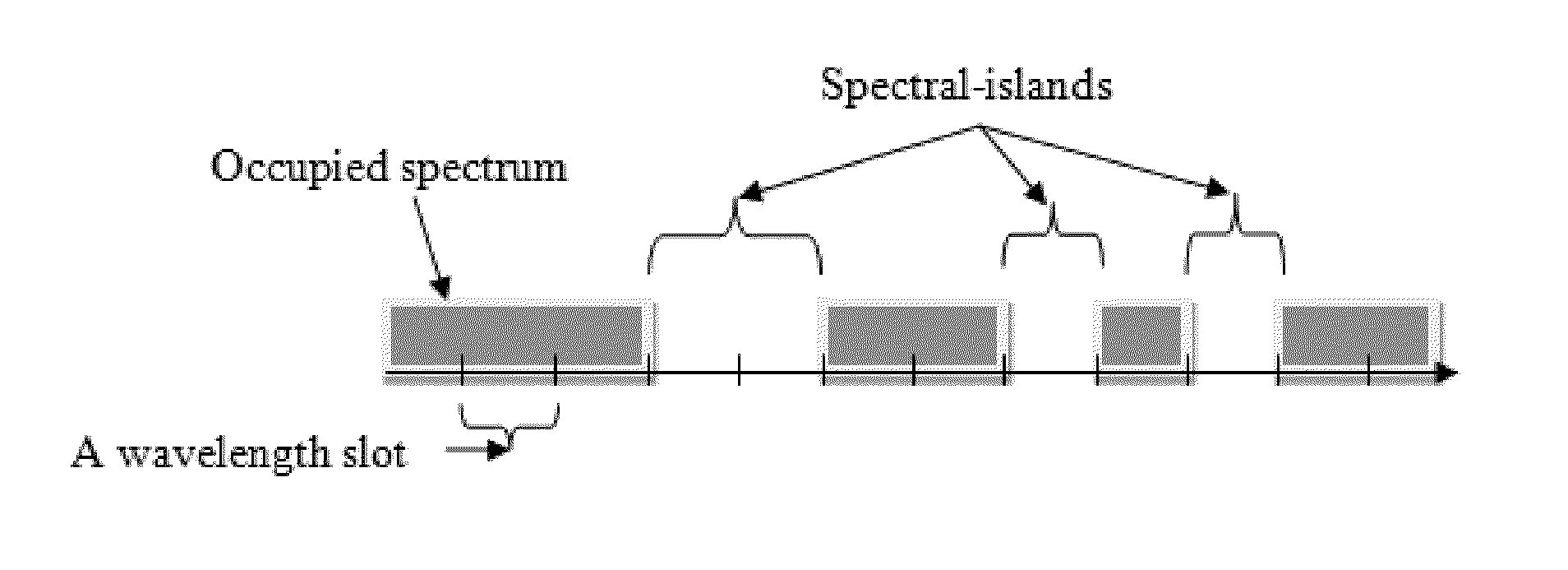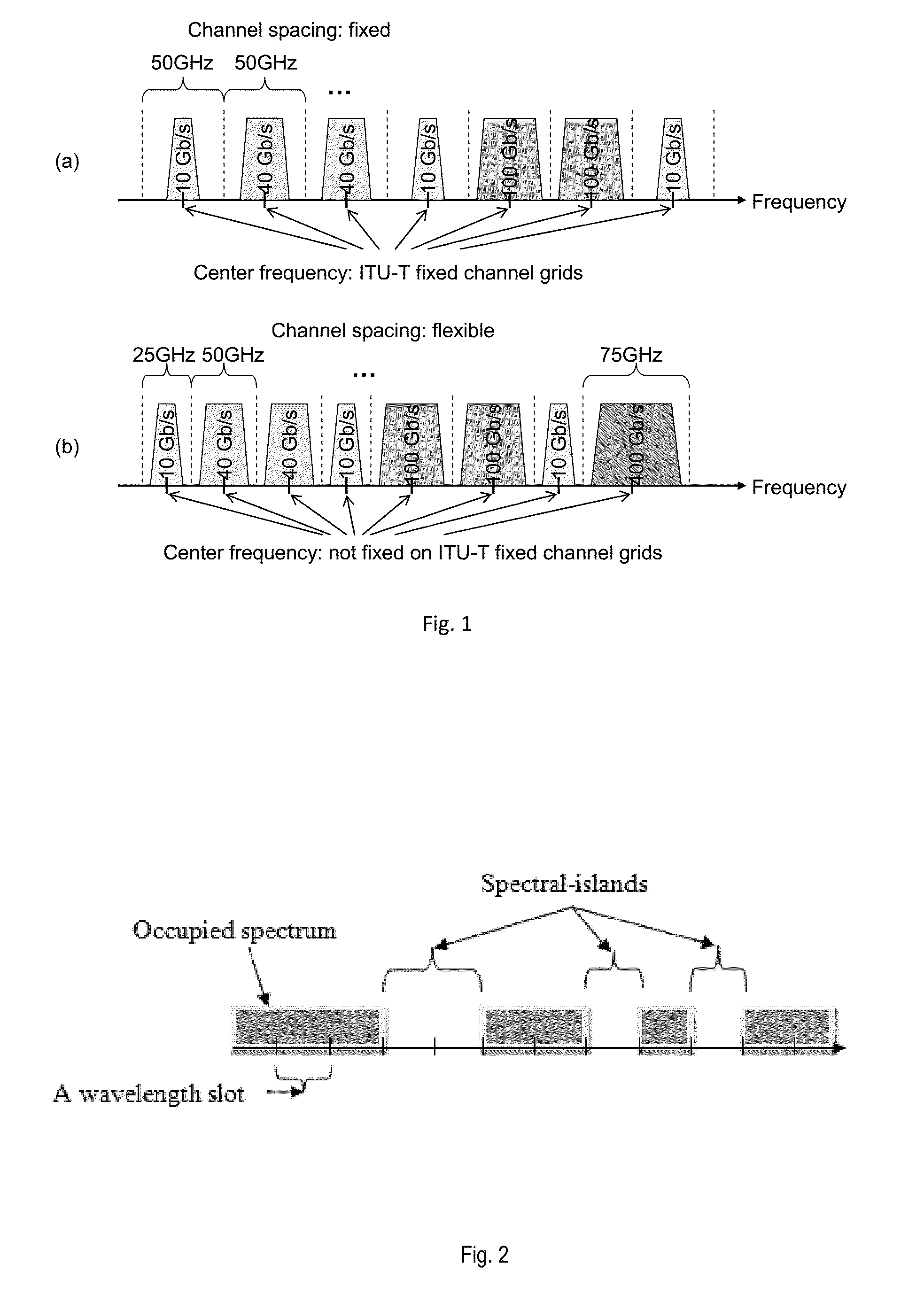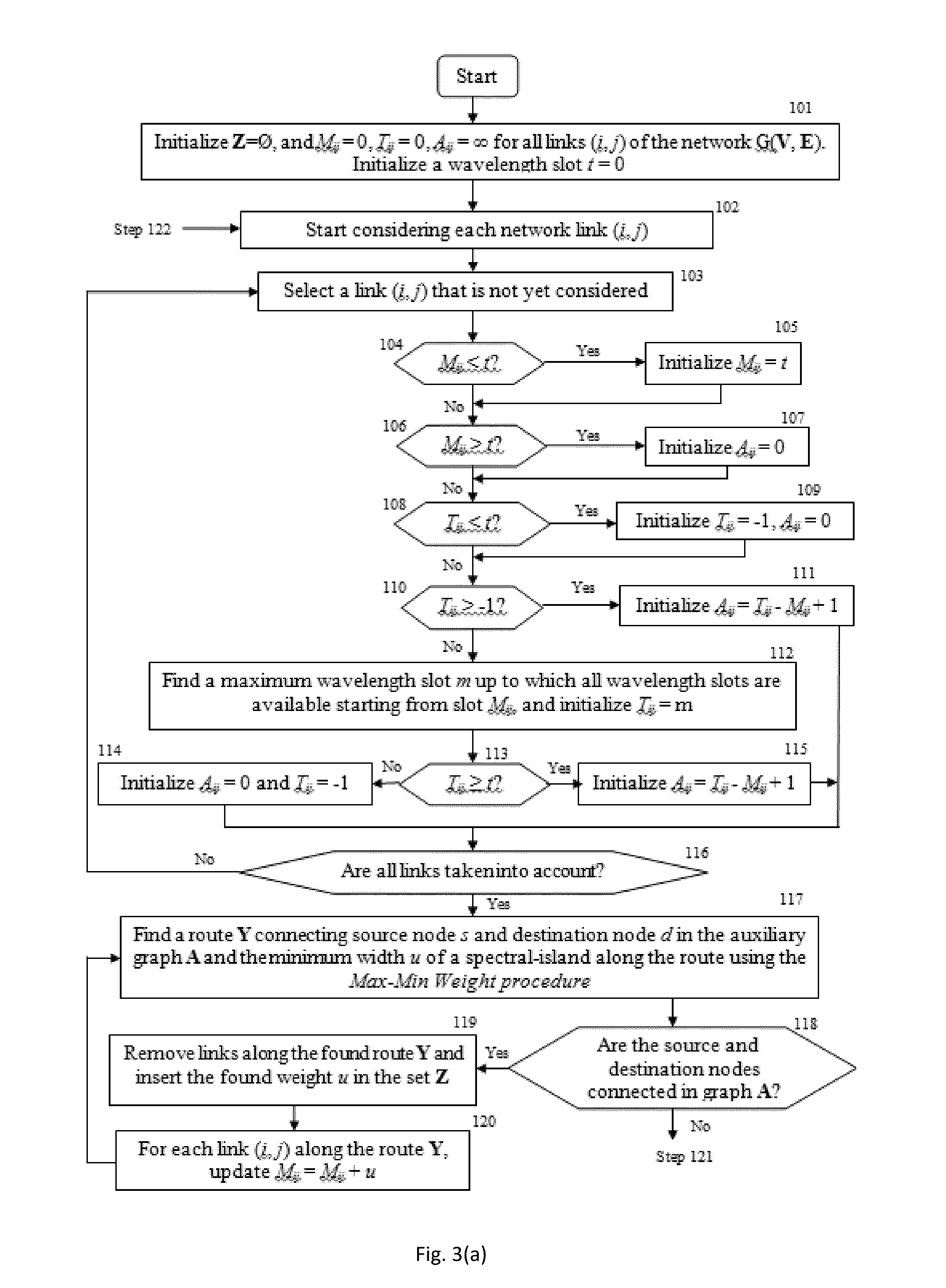Spectrum aware rate selection procedure for optical channels in flexible WDM networks
a flexible wdm network and channel technology, applied in the field of optical communication, can solve the problems of channel blocking further increase in the network, rigid network, inefficient utilization of spectral resources,
- Summary
- Abstract
- Description
- Claims
- Application Information
AI Technical Summary
Benefits of technology
Problems solved by technology
Method used
Image
Examples
Embodiment Construction
[0021]The present invention is directed to a spectrum-aware rate selection that is recursive in which a solution of the data rate is obtained using the solutions of lower data rates.
[0022]We denote L as the set of line rates offered in an FWDM network, Xl as the required spectrum for a channel with a line rate lεL, r as the data rate of a traffic demand, Un as the total required spectrum for a data rate n, Kn as the optimal set of line rates for channels that support a data rate n, Z as the set widths of spectral-islands along the routes connecting the source node s and the destination node d, P as a line rate that is selected for a channel, Q as a data rate whose solution is used to determine the solution of a data rate n under consideration, Cijt as the spectrum availability profile of a link (i, j), Mij as the maximum wavelength slot starting from the current wavelength slot up to which all wavelength slots are occupied in the spectrum availability profile of a link (i, j), Tij a...
PUM
 Login to View More
Login to View More Abstract
Description
Claims
Application Information
 Login to View More
Login to View More - R&D
- Intellectual Property
- Life Sciences
- Materials
- Tech Scout
- Unparalleled Data Quality
- Higher Quality Content
- 60% Fewer Hallucinations
Browse by: Latest US Patents, China's latest patents, Technical Efficacy Thesaurus, Application Domain, Technology Topic, Popular Technical Reports.
© 2025 PatSnap. All rights reserved.Legal|Privacy policy|Modern Slavery Act Transparency Statement|Sitemap|About US| Contact US: help@patsnap.com



